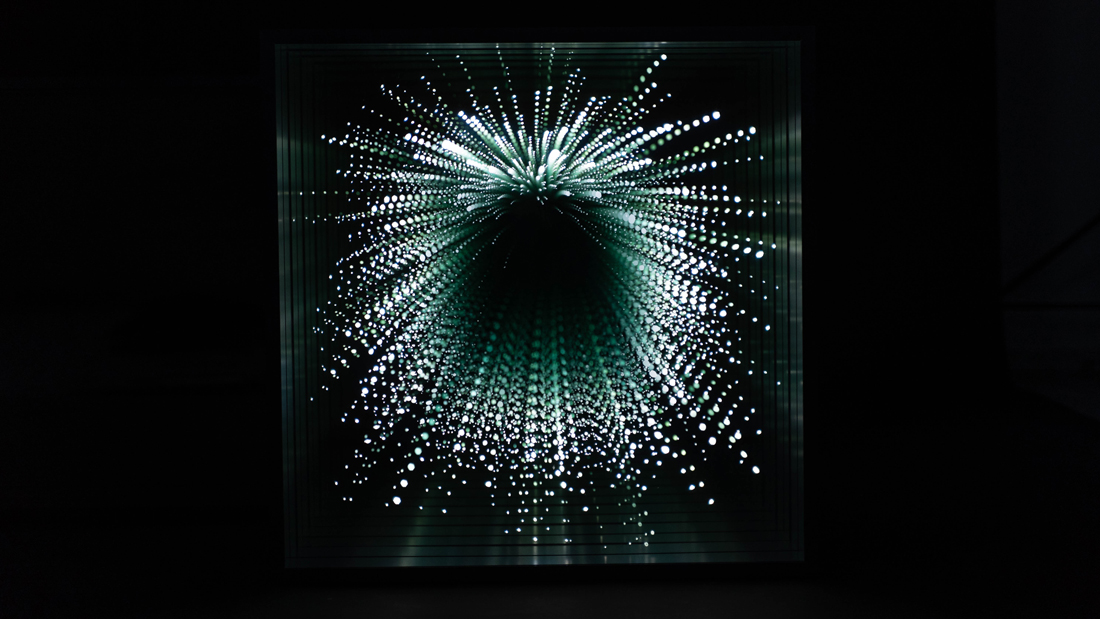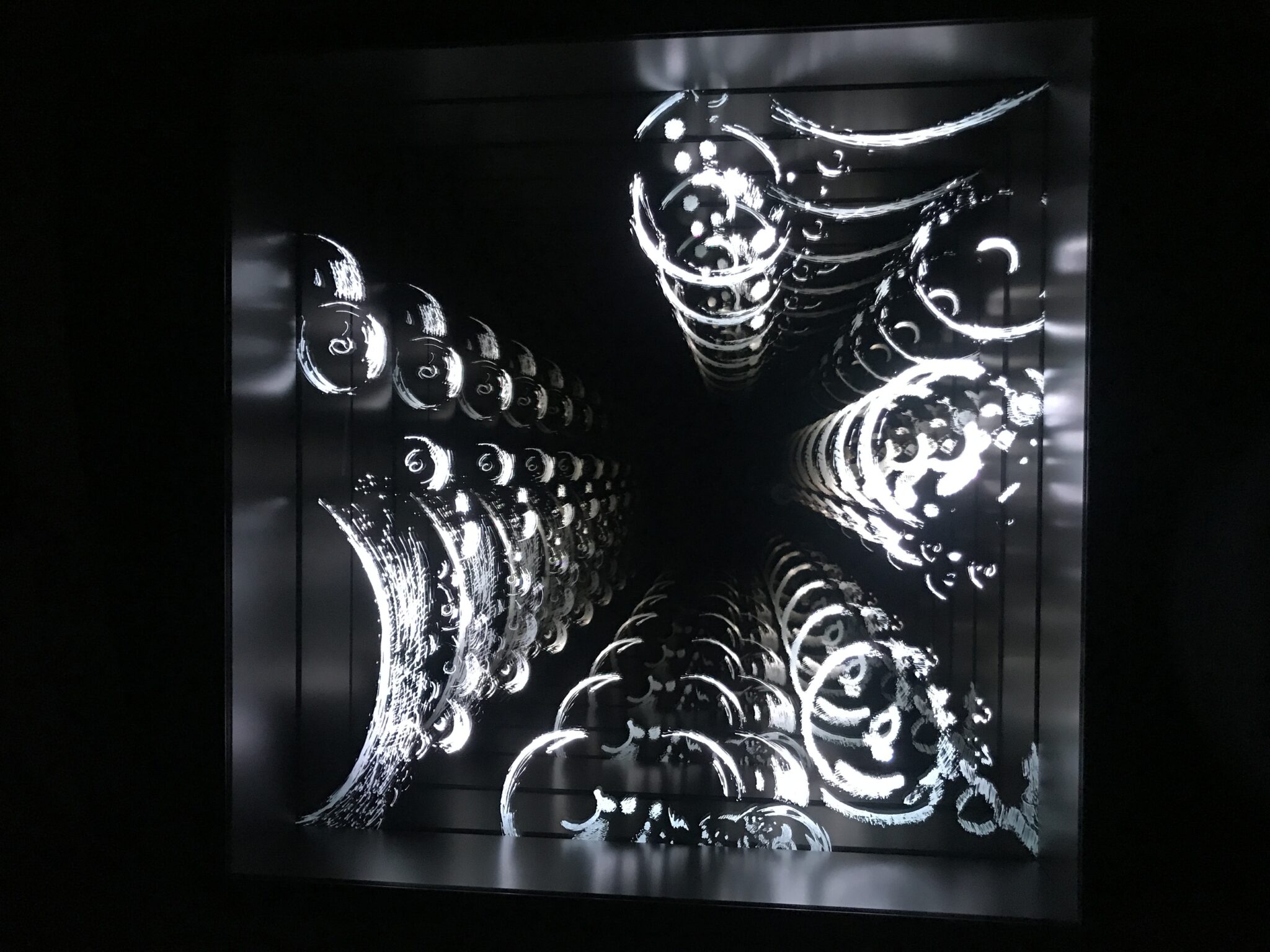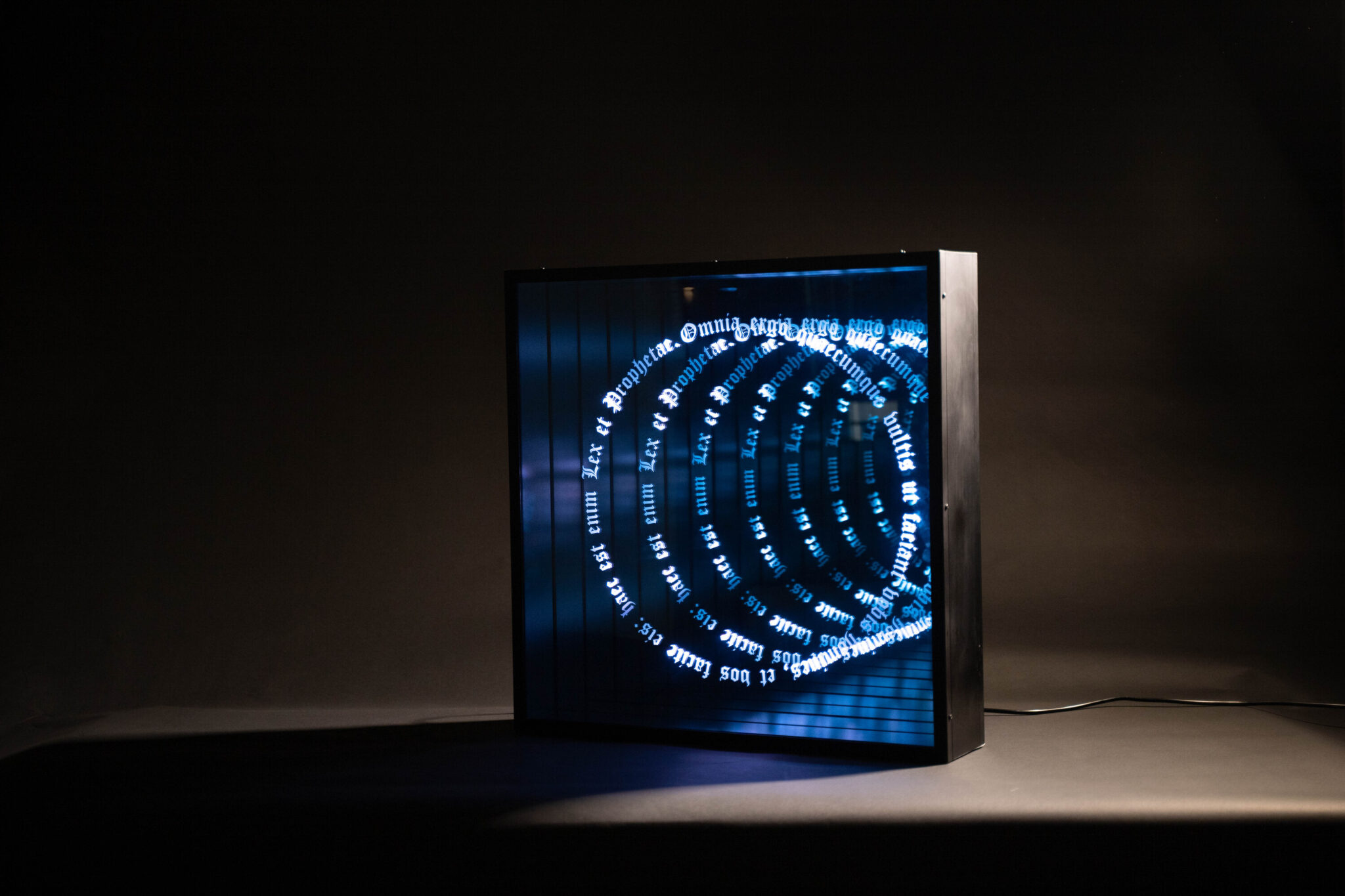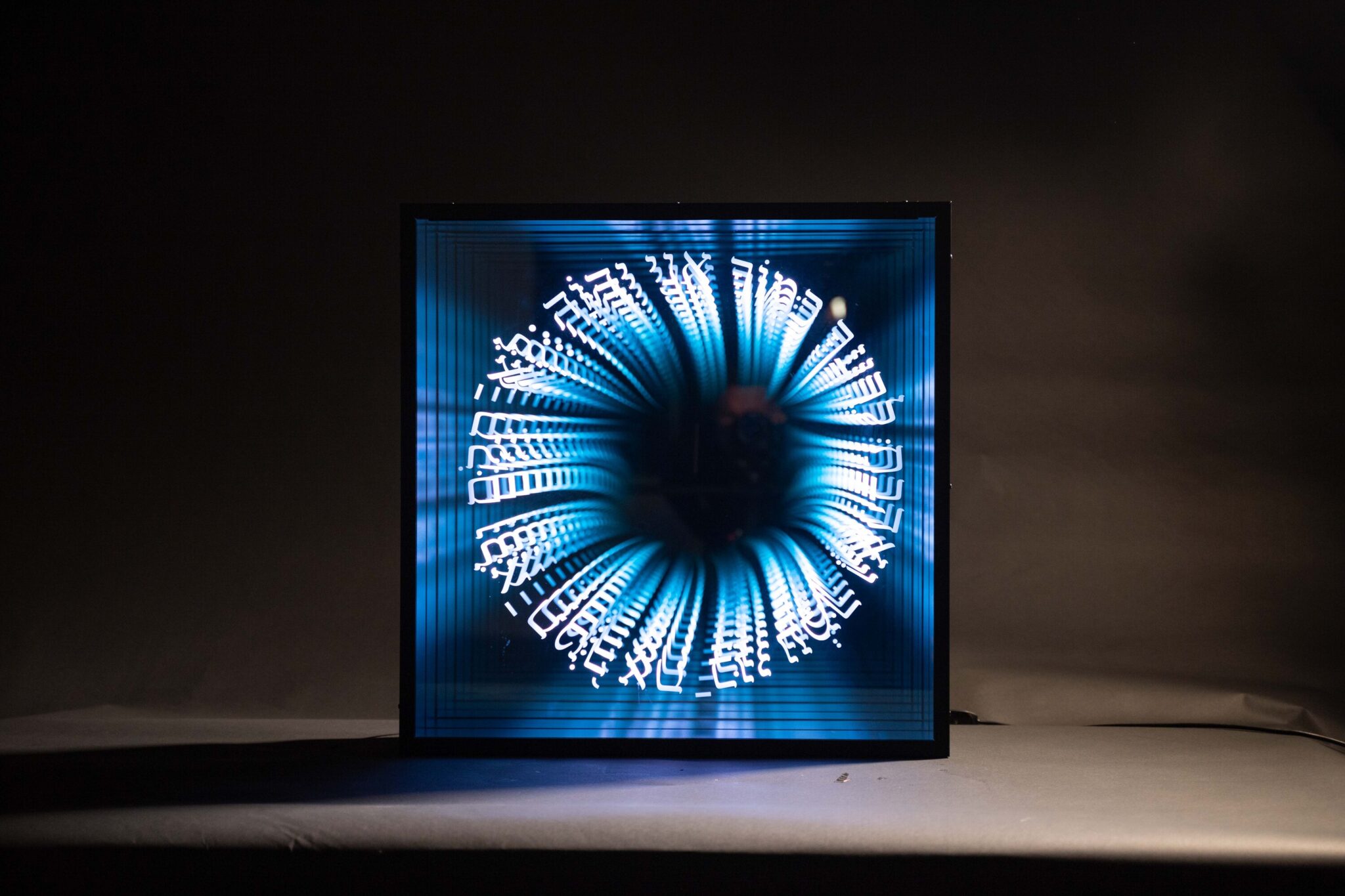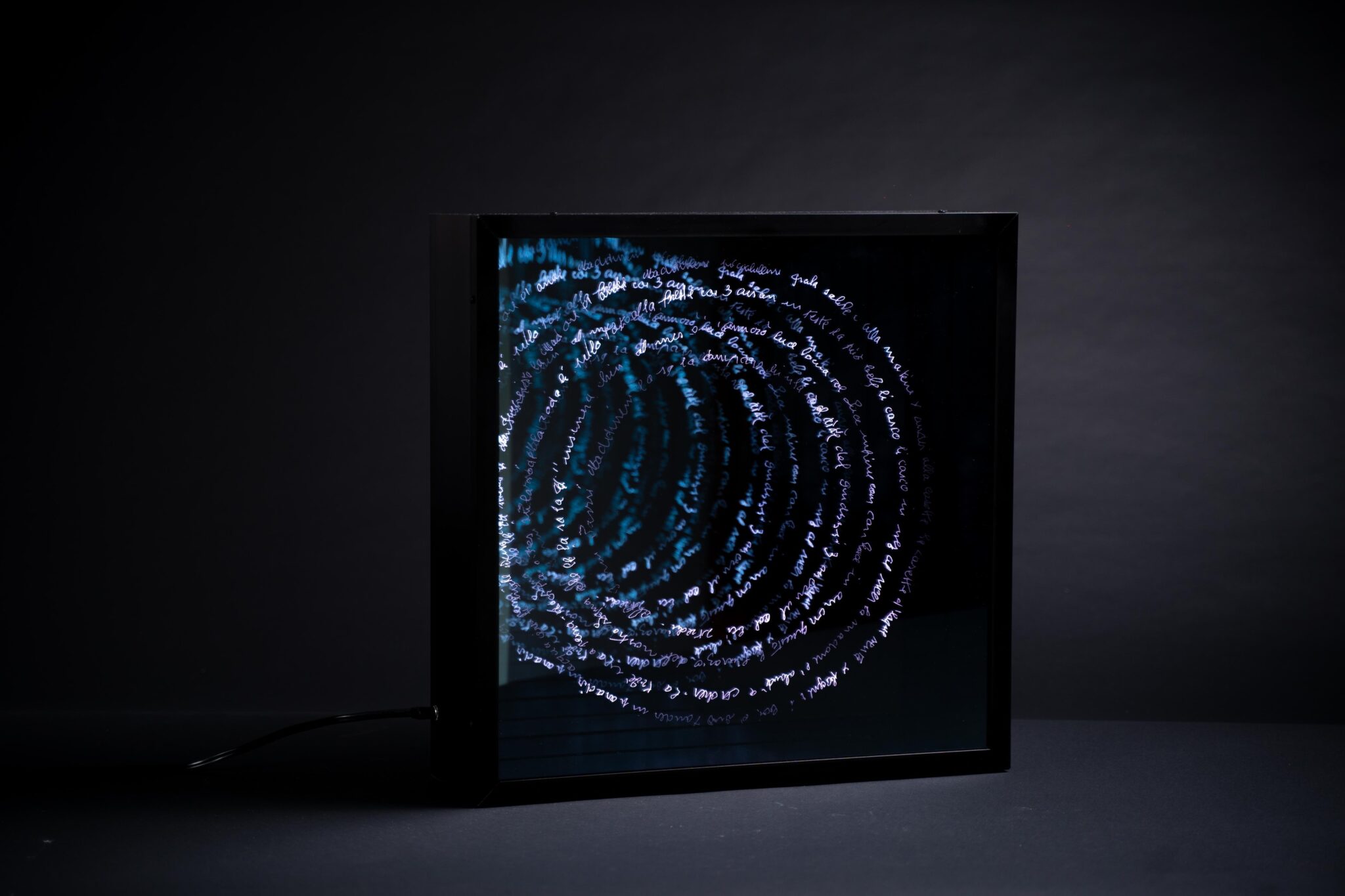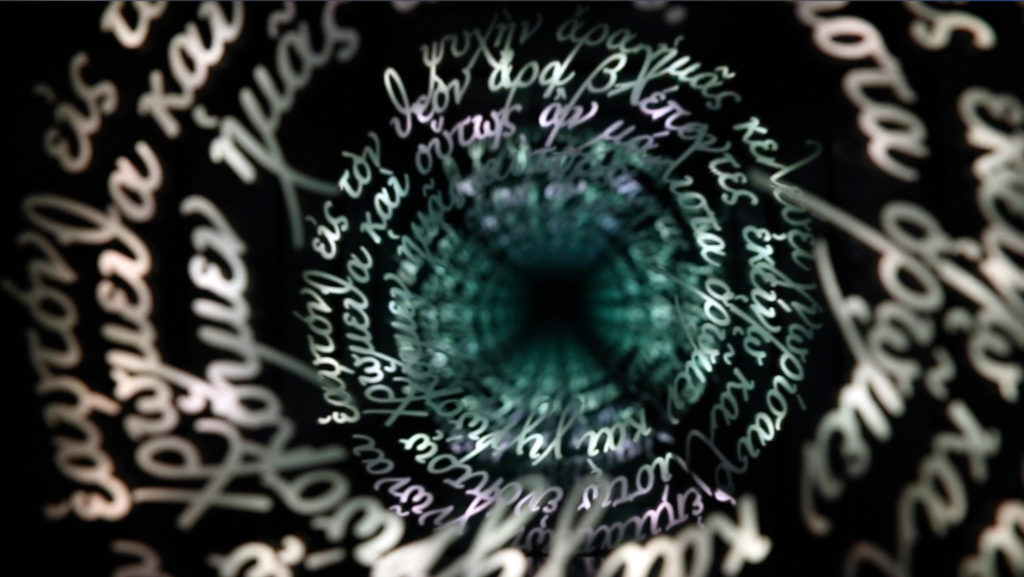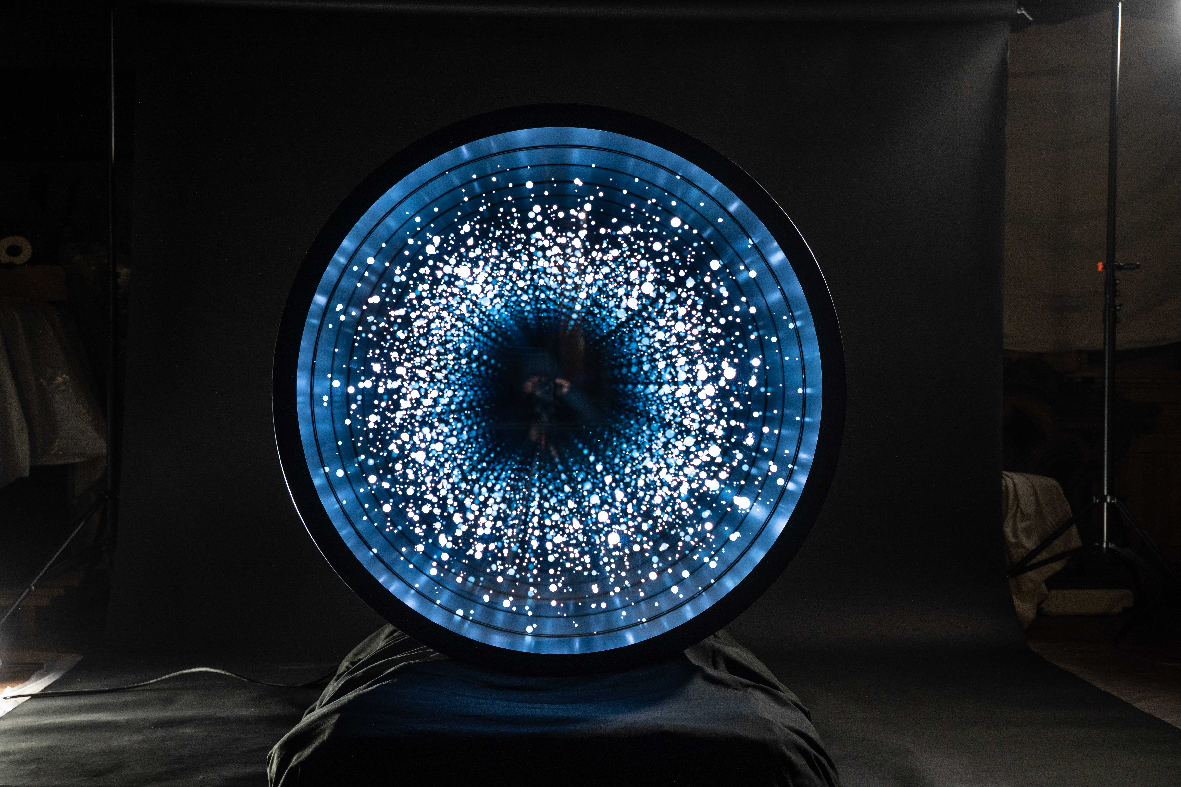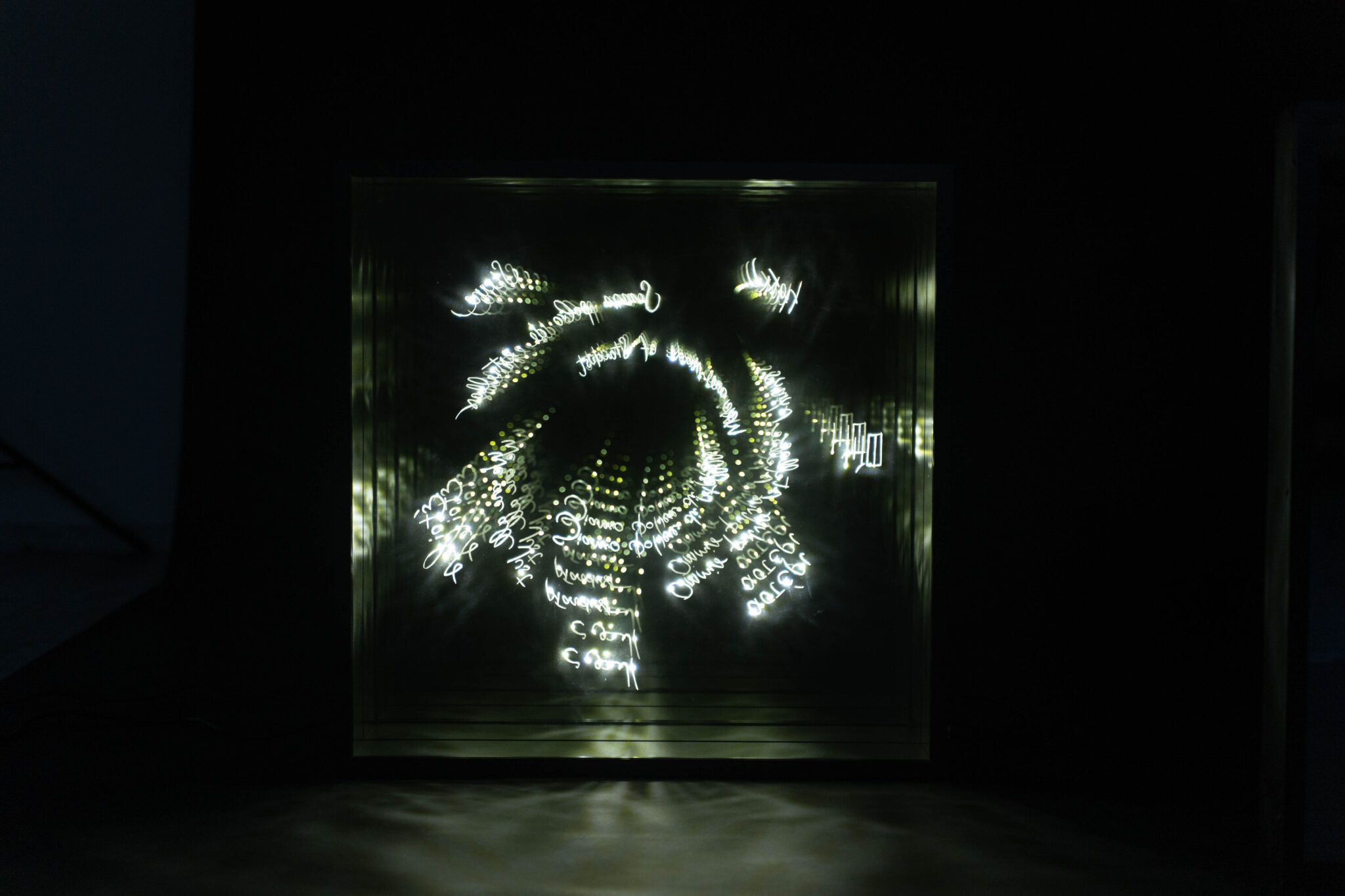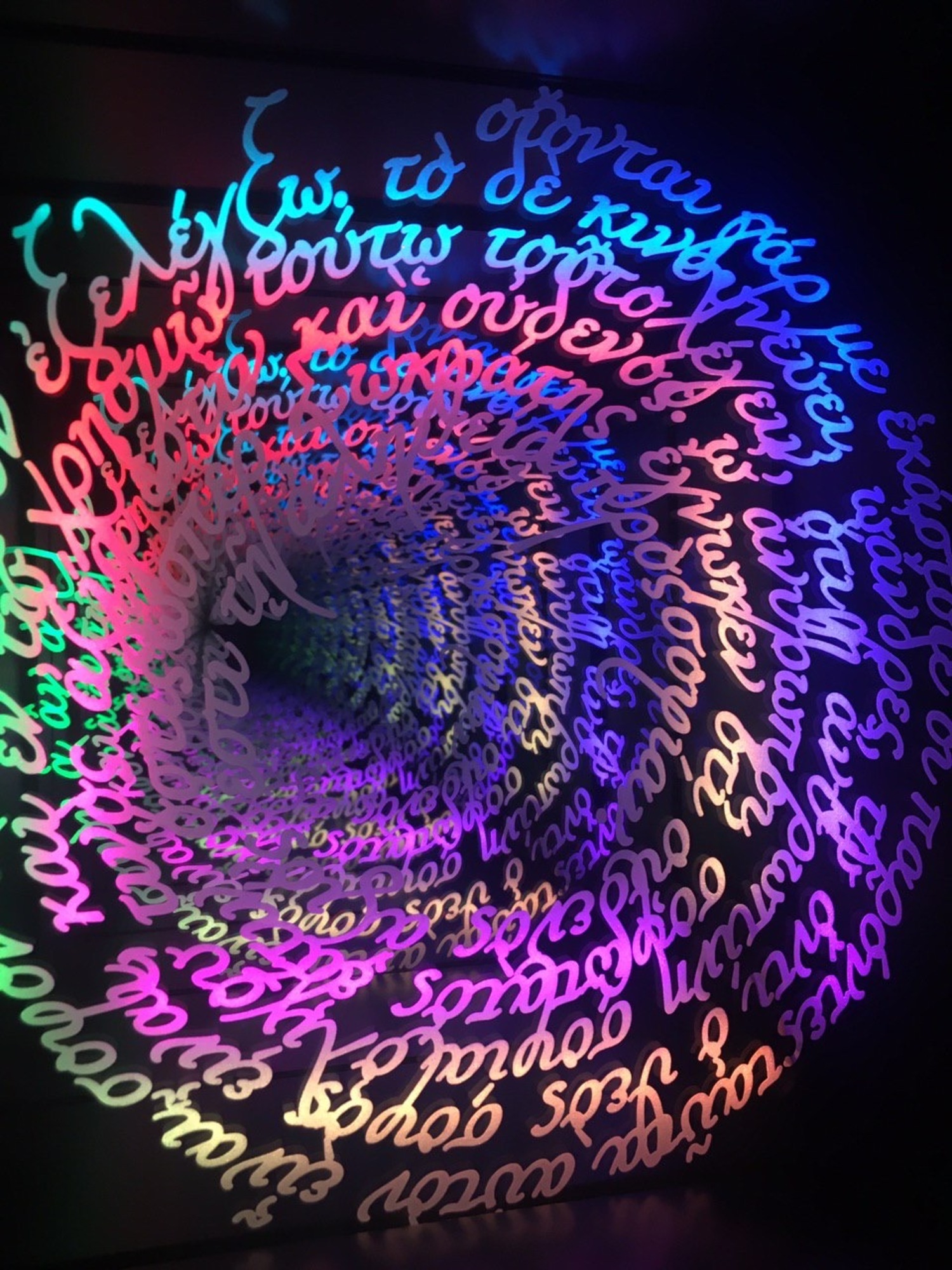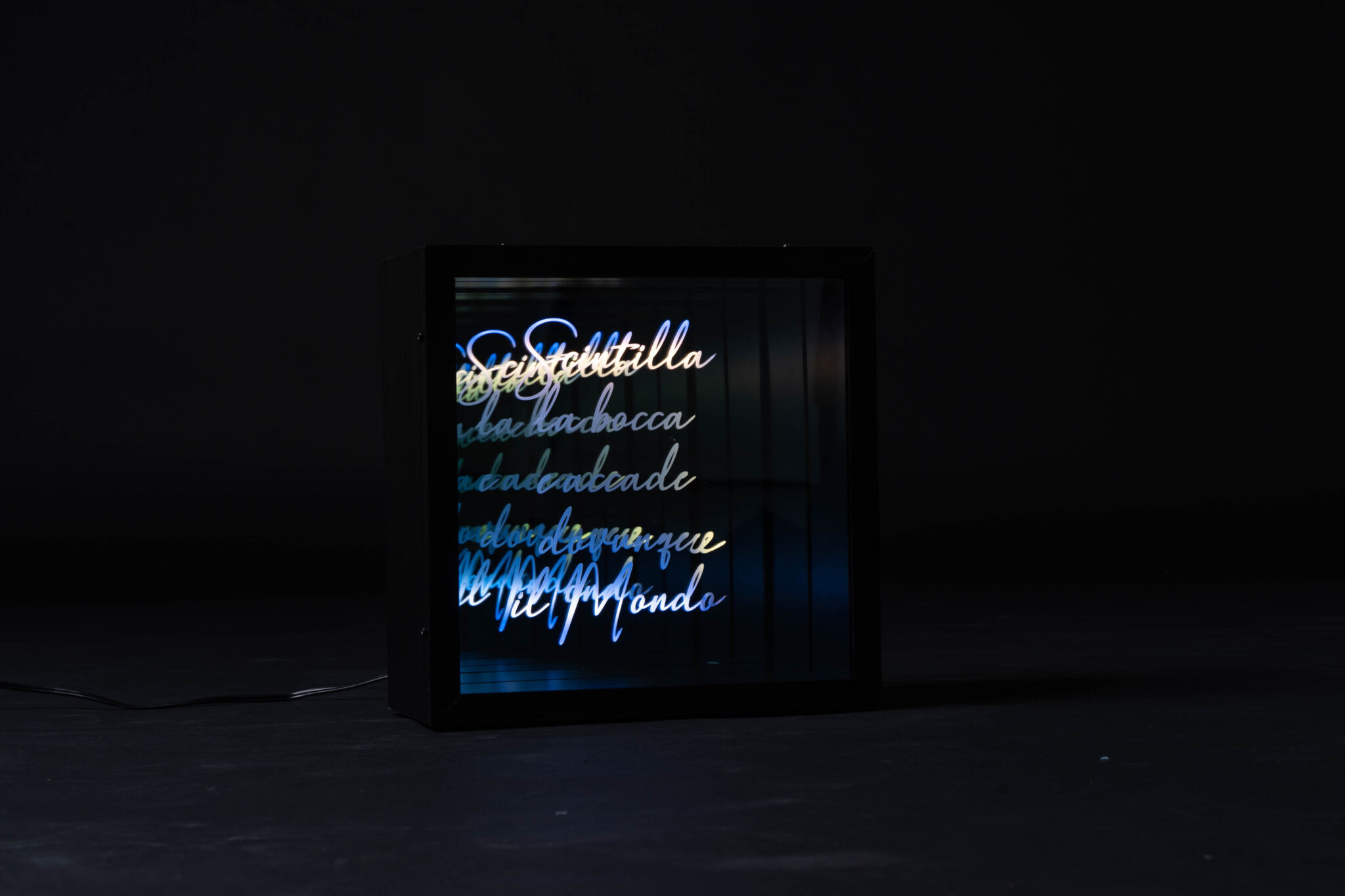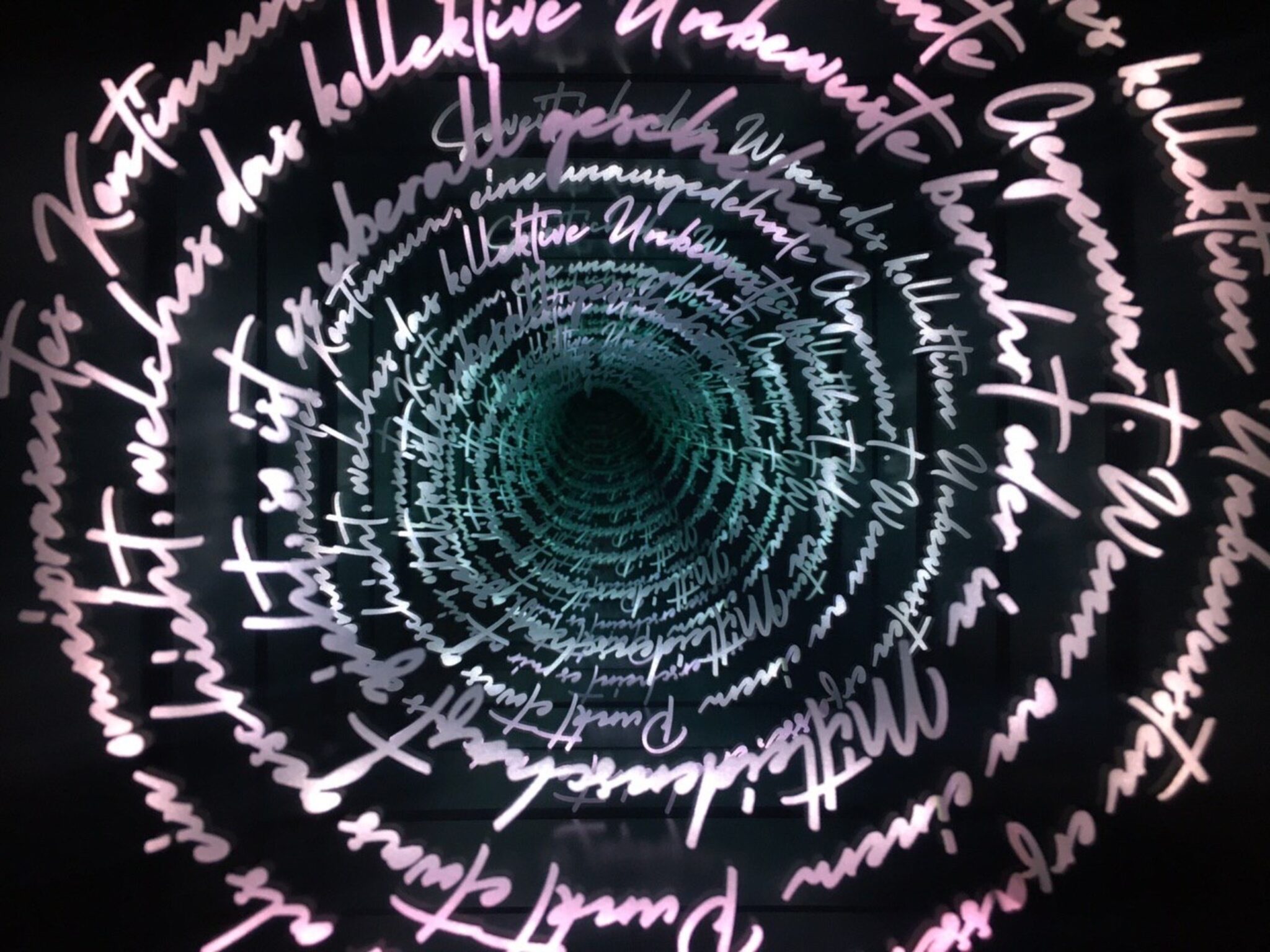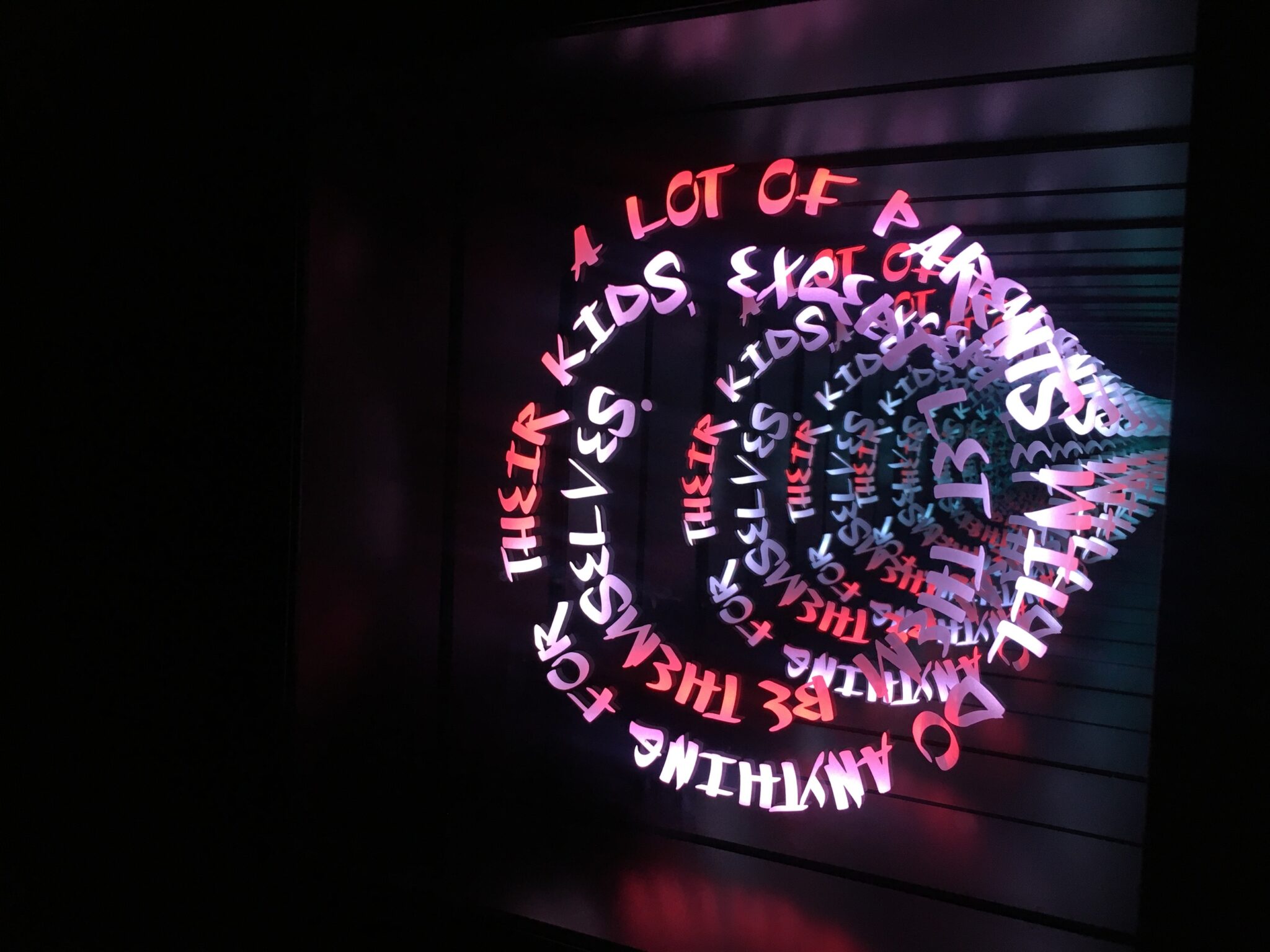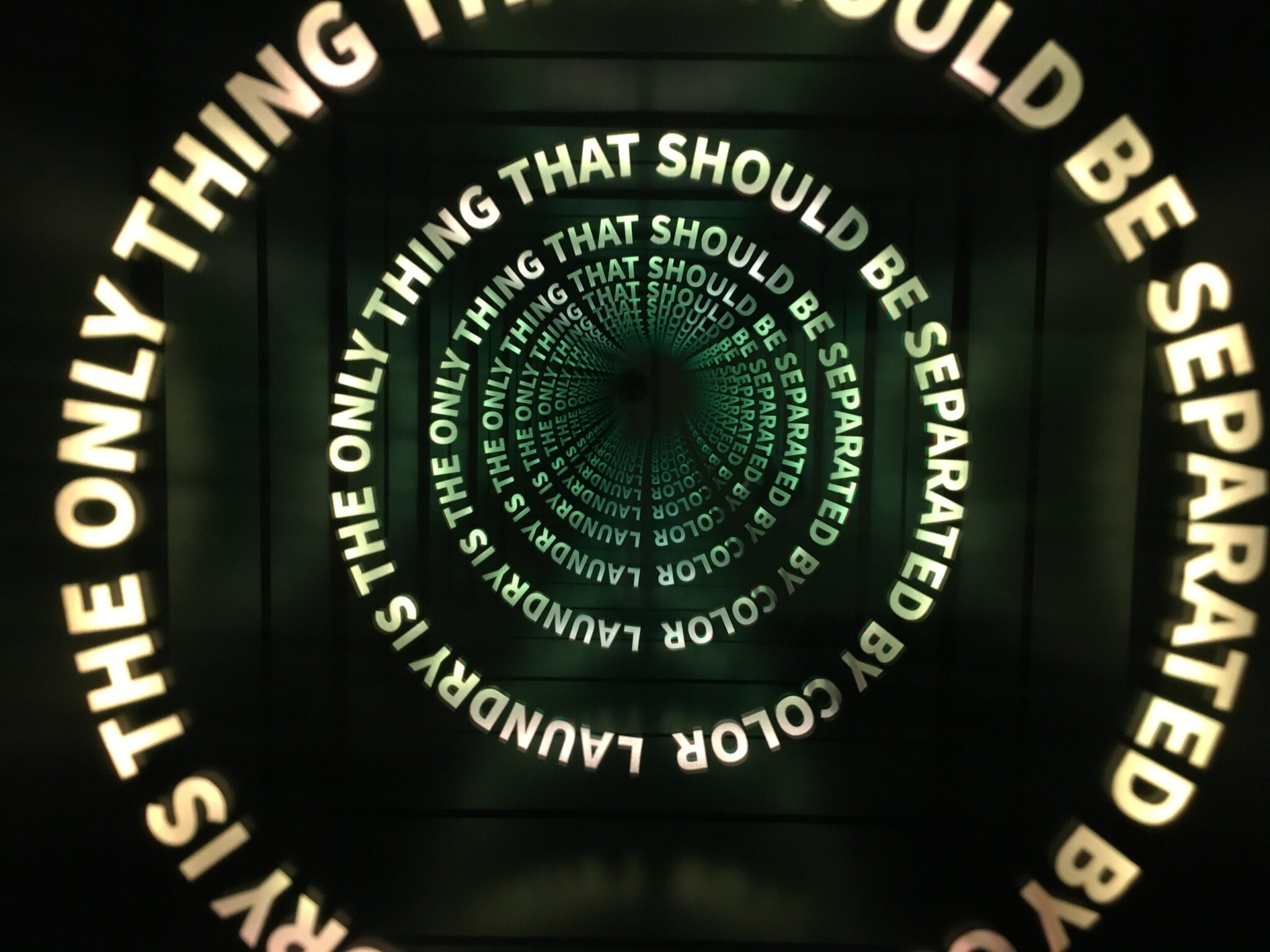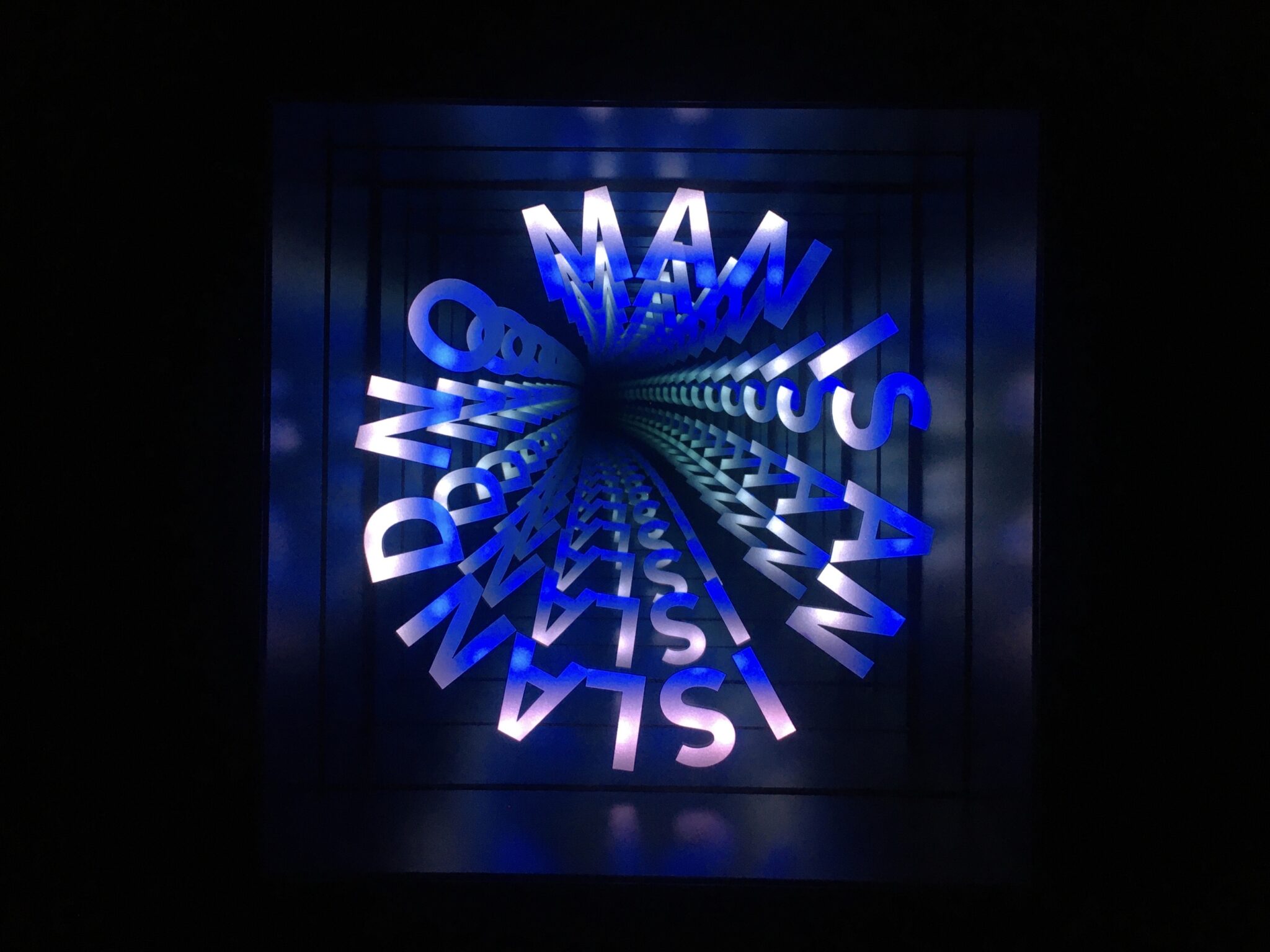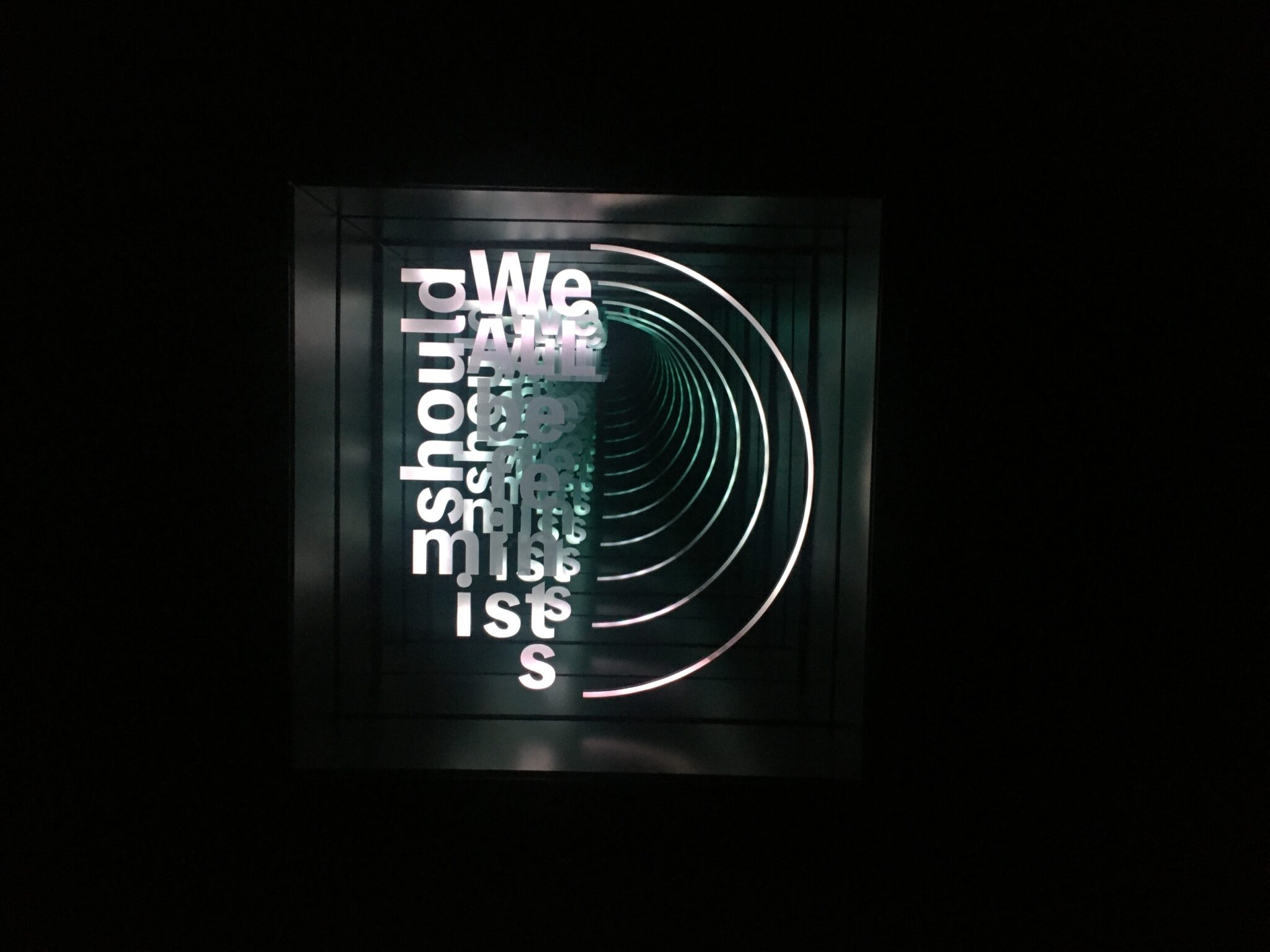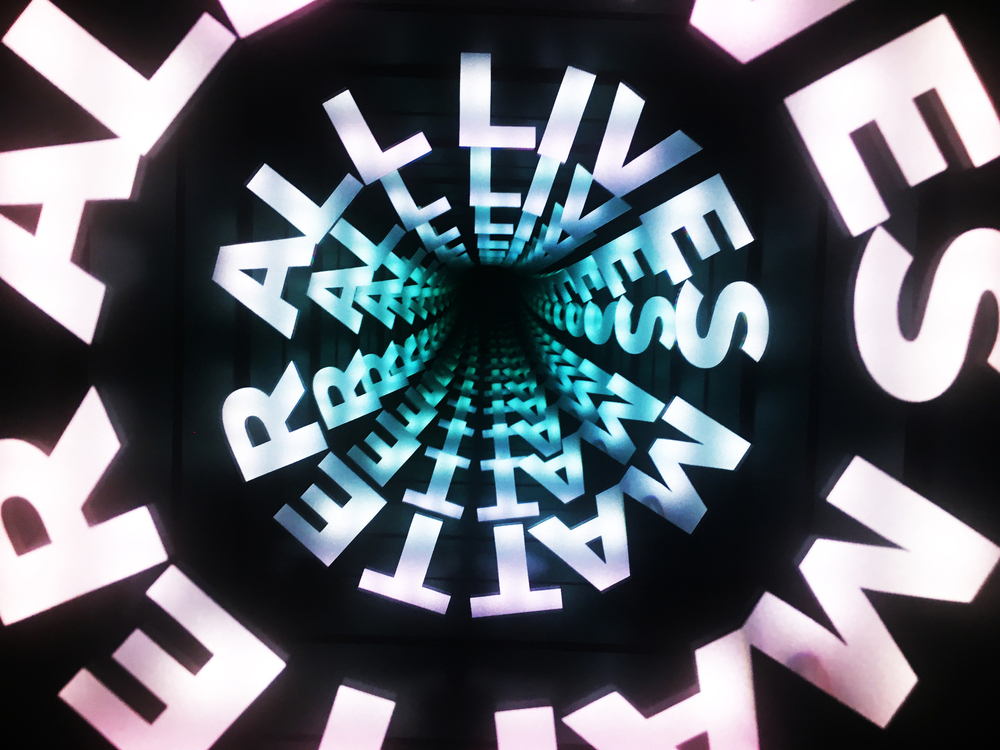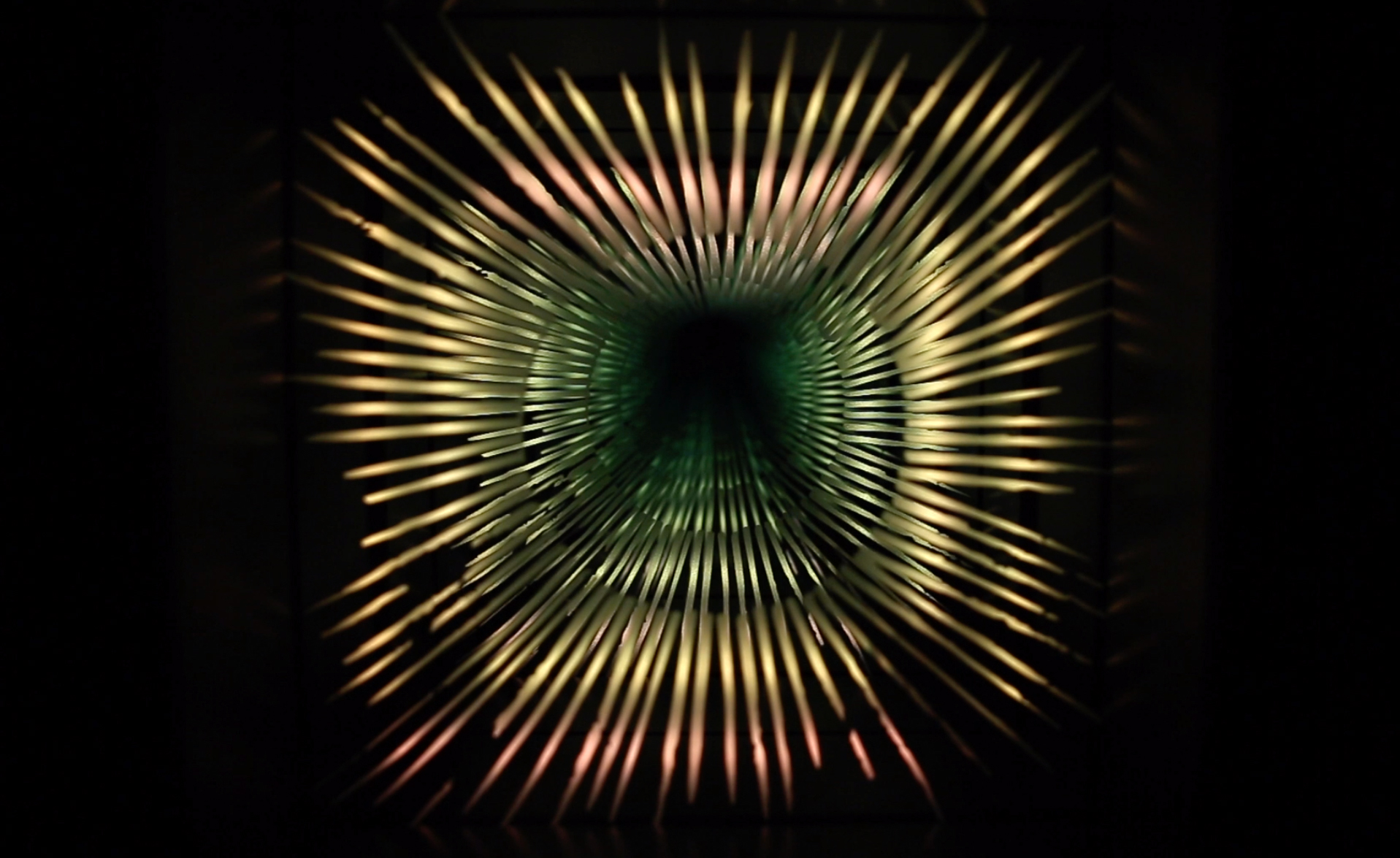Penelope Chiara Cocchi’s art began first through drawing, painting and linguistics, and later evolved a language with which to converse with the contemporary world through signs that become light, and then through the sensory and illusory image that emerges through the use of infinity mirrors. She later returned to signs and to painting, making use of a wide variety of techniques: installations, performance art, photography and video.
Philosophic, social, political and cosmological reflections take on a variety of forms expressed through a variety of languages. Her artistic philosophy is a practical one; one that borrows the voices of scholars, scientists, and humanists making use of their essays, quotations and treatises.
Penelope Chiara Cocchi uses the technique of the infinity mirror, transforming them into containers for all kinds of research: specific series focusing on a range subjects, from astronomy to microorganisms in the relationship between microcosms and macrocosms, from philosophy to poetry, from psychoanalysis to personal introspection, and even the study of religion, comparative religion and the relationships between them (religious science).
POETICS
A mirror allows us to see ourselves, to reflect on our identity. Penelope’s infinity mirrors hold reflections on absolute themes (infinite ones), while at the same time reflecting the individual who is observing them. They deal with the identity of the human being, from social, natural, anthropological and historical standpoints. Therefore, their very existence means that they are contact points, portals, between the Absolute and the Relative. Contact points and portals which remain out of reach, because the only way to enter them is through the eye, and thus, through the mind. And it is the mind itself which is the vehicle for change, by means of Art, through which to reach those everyday, vital spaces driven by people who are like DROPS.
These are works that reflect on universal themes, but at the same time, they are mirrors, which, by their very nature, are relative. A mirror reflects exactly what is before it, without ever repeating itself. It is the ultimate phenomenological object. If a person were to repeatedly perform the same act in front of a mirror, not even that act would be absolute, because every reflection would be different: every second the person would be one second older, a second more of the day would have gone by, it would be one second darker and the dust in the room would have shifted position. Any yet, Penelope’s works force this relativity, seeking the Universal as much as possible, in other words, trying to connect the dots. Just as the ancients did in indicating the constellations in the night sky.
The external mirror roughly reflects its circumstantial reality. It is not a mirror capable of being a phenomenological element, but a blurring mirror. Thus do the boundaries between the subject and its surroundings become blurred, because it seeks to make the subject abstract and transport it elsewhere, by playing with its senses. Likewise, the confines between one subject and another are blurred, because these are works that seek to highlight resemblances rather than differences between humans.
The mirror reflects, and invites the mind to “reflect,” to seek assonance among the things it feels.
As we see before us an infinite tunnel, we see ourselves at the same time reflected in the mirror. We see at once what is before us and what is behind us. This is a REFLECTIVE PROSPECTIVE, showing us not only the future we aim to conquer, but also our past, over our shoulders, reverifying it as we sift through it. This is a significant point which led Michelangelo Pistoletto to the Città dell’Arte and to Terzo Paradiso, and which also pushes me in the same direction – one in which we are required to assume our responsibility as well as our freedom.
The mirror is like a movie camera that constantly records the present moment; a camera that is always on, recording not only whenever a person pauses in front of it, but also all those hours when the people are in bed and the room is empty and dark. It is as if someone were shooting a film in the present, continuing to record even now, but which runs towards the future.
THE TUNNEL.
INFINITE REFLECTIONS.
The challenge. “I’d never be happy till I’d managed to create something which would amaze even children. Because I really wanted to tap into the most irrational of spirits. It is in interaction, in the contemporary art of my own times, that I find that space in which I obtain a sense of being completely heard, right in the middle of the chaotic life that blares through our streets and bellows through our means of communication. I was looking for something loud enough to shut it all down and create silence and space for reflection.”
The tunnel with its infinite reflections, first of all, ties into the aforementioned challenge. Our sensitivity shimmers like the surface of a lake. We are called to a non-active action, because it is our senses that are being bounced around in that endless series of boxes, and not our body. This is how we get carried away without really wanting to be. To take a step, we’ve got to consciously want to take it, but when I find myself before this kind of vortex, I can’t allow myself to keep from proceeding, to keep from seeing. I might close my eyes, but at that point I will have already seen. This kind of optical illusion doesn’t make you close your eyes, on the contrary. They always make you ask instead, “how is that possible?”, therefore creating an instinctive internal motion, opening a door. First of all, it is precisely this portal that opens instinctively, immediately, within the sensitivity of the observer. This was extremely important to me, vitally important: to avoid arriving at the work through rationality on first impact. Its effects needed to be experienced purely through instinct. For this to happen the curious, inner “child,” active in the first few seconds of seeing the work, plays a fundamental role. Next curiosity comes into play. Finally, only at the end, does reason come into play. At this point the images contained in the piece can begin to stimulate discussion.
The work speaks about the future, but also of a time machine, and about the past. The reflections found inside these works are all about a universal gaze, that asks itself about the past of Humanity and Nature, about our present and our current ways of living in this world, and about the future, which is to say, about our responsibility. These works then become a sort of time machine, which can tie these three realities together, and unite them in a specific point: one where our gaze and our minds enter this “technological box” by means of our senses, carrying our thoughts along for the ride. Thus can our thoughts penetrate the reflection the same way our senses deepen our gaze into the tunnel.
The tunnel recalls a labyrinth, symbol of a loss of consciousness, with the object of finding our way anew again, finding indeed A NEW way. this is the same purpose as Art.
“The Flagellation” by Piero della Francesca, represents a great epiphany in human perception: the discovery of prospective and the revolution of the Renaissance. Prospective, and the vanishing point, are also constructive elements in Penelope’s work, whose roots are sunk deeply into the humus of modern human history. The symbol of this transition into modernism is the use of perspective.
